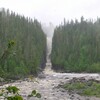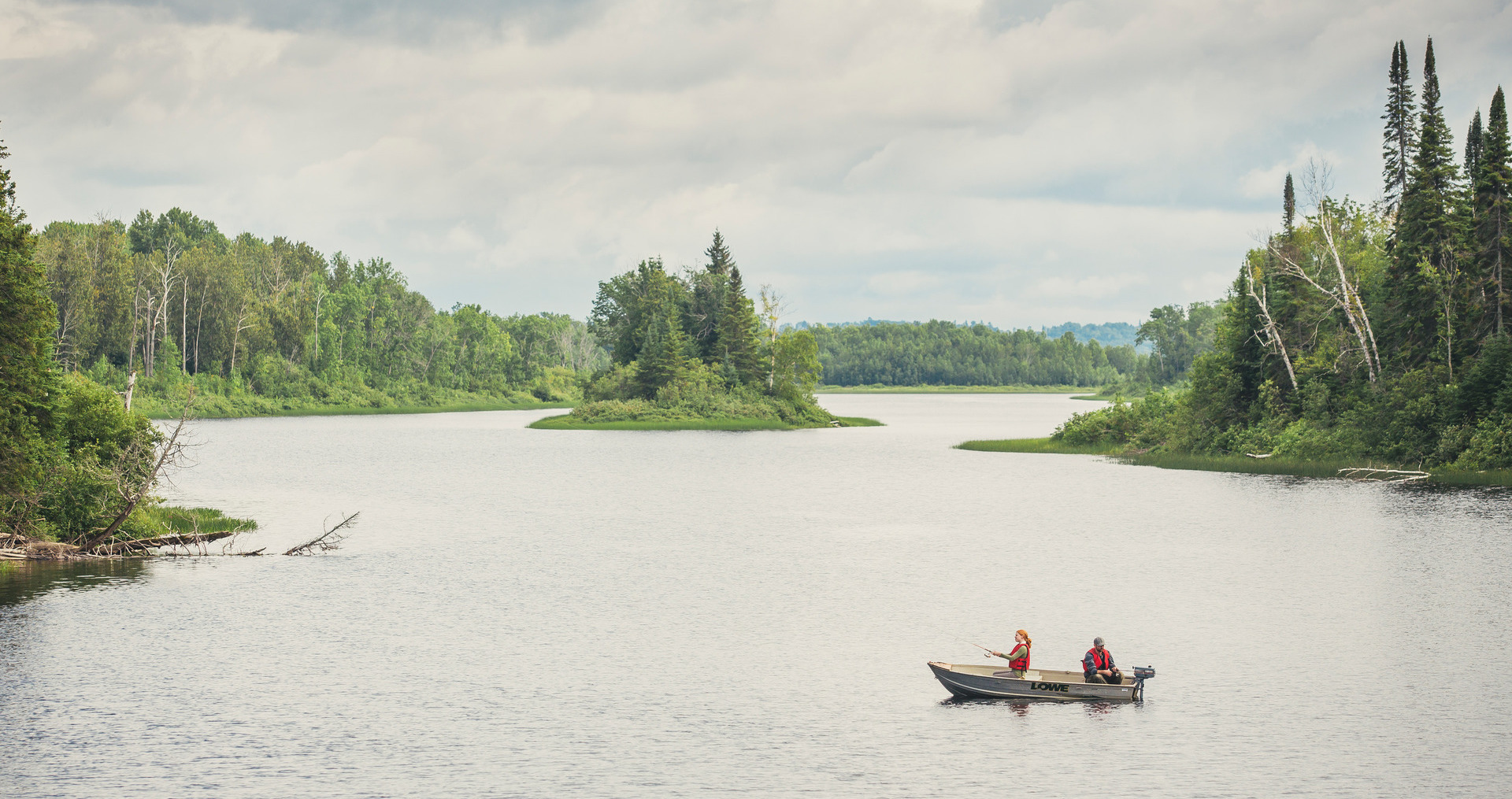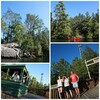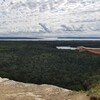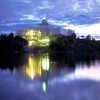
Buildings Beyond Belief!
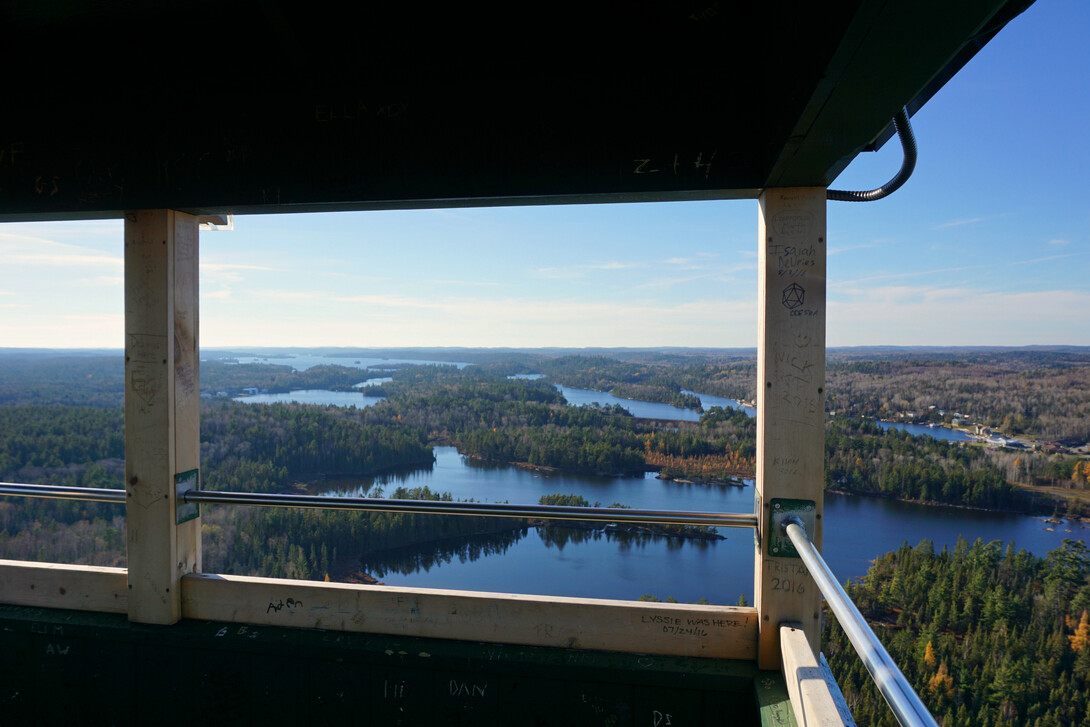
From fire towers to Nobel-Prize-winning cave spheres, Northeastern Ontario is home to a ton of unique structures you can’t find anywhere else in the world. How many of these architecturally interesting spots have you visited?
The Cree Village Eco Lodge
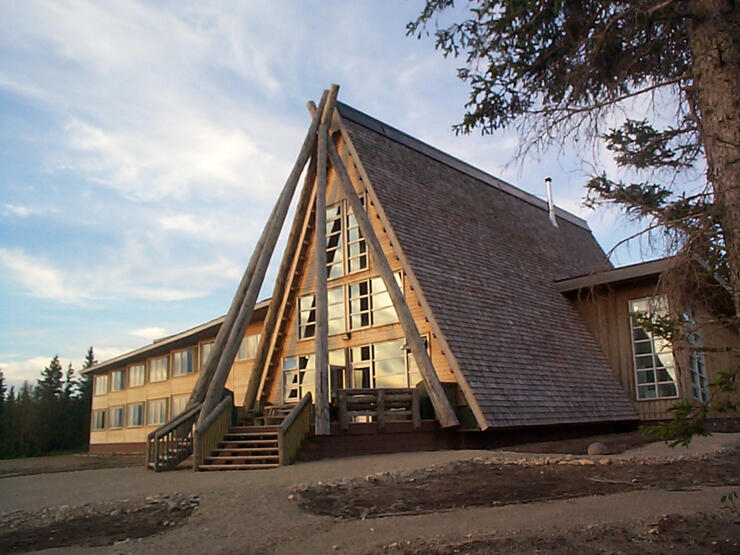
The Cree Village Eco Lodge is one of the most architecturally interesting buildings you’ll find in Northeastern Ontario. Located in Moose Factory on the shores of the Moose River, the unusual lodge opened in 2000 with the goal of encouraging tourism while paying tribute to the town’s rich indigenous history—all while striving for minimal environmental impact.
The most striking feature of the eco lodge is the shaapuhtuwaan—a Cree word meaning “long teepee with doors at each end”—which serves as the main hall. Two sets of teepee poles converge above each entrance and support a ridgepole which gives the hall an A-frame appearance. Whether you’re approaching the lodge on land, or seeing it for the first time from the river, the soaring wooden structure with its floor to ceiling windows is breathtaking.
Traditionally, this kind of large building was used by a number of families as winter lodging. Residents would all contribute food and cook together—which makes the great hall the perfect spot to enjoy a meal with fellow travelers. The interior also uses natural materials wherever possible—the furniture is made from rough timber and the fireplace in the main hall is local limestone. It’s the perfect place to experience the best of indigenous architecture and relax in a spot named by National Geographic as one of the top 25 eco lodges in the world.
Inco Superstack
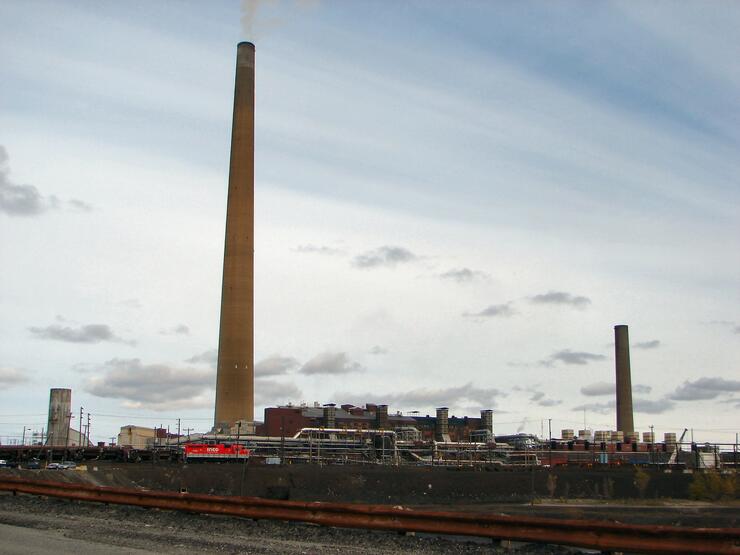
Did you know northeastern Ontario has one of the tallest freestanding structures in Canada? Just behind the CN Tower is Sudbury’s Inco Smokestack—which is also the tallest chimney in Canada. In fact, at the time of construction, it was the tallest chimney in the world!
This impressive structure tops out at 1,250 feet and has been a part of the Sudbury skyline since 1970 when it was completed. It took about 39,000 tones of concrete to create the stack, which tapers from a width of to a width of 35 metres at its base to about 16 metres at the top. While there’s been recent talk from the company that owns it about replacing it with a smaller structure, the stack is part of popular culture now—Stack Brewing even offers an IPA called Stack 72.
While you can’t tour the chimney as it’s part of a working mine operation, it’s easy to spot from anywhere in Sudbury. So be sure to snap some photos of this iconic part of Canadian history when you’re in the area!
Sudbury Neutrino Observatory
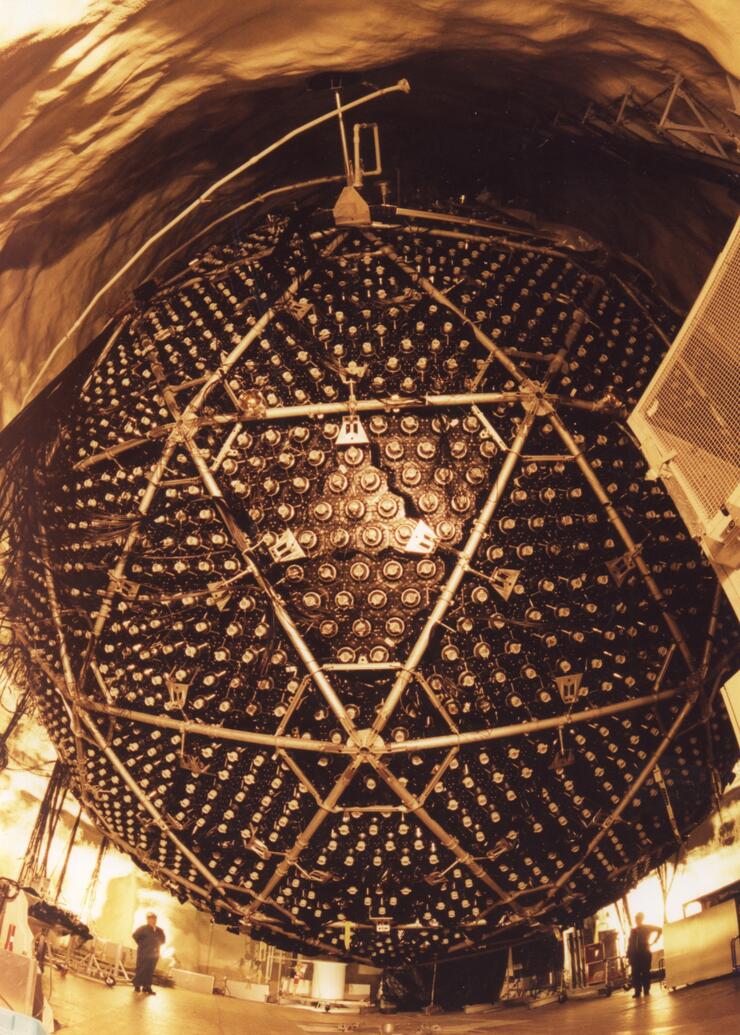
Inco (today know as Vale) doesn’t just build up, however. They also drill down. Deep beneath the earth, 2,100 metres underground in Vale's still operational Creighton Mine, is a massive Buckminster Fuller sphere. Like something from a science fiction movie, this giant steel sphere sits in the world’s largest, deepest man-made chamber—the excavated space is a big as a ten-story building. The mammoth sphere is 18 metres across and is suspended above the ground by more than a dozen steel cables.
Why build a massive sphere more than two kilometres underground? For science! In fact, when the Sudbury Neutrino Observatory (SNO) and its giant sphere officially opened in 1999, Dr. Stephen Hawking was on hand to do the honours! The sphere is designed to detect solar neutrinos—one of the smallest known particles. In fact, the science experiments that took place here are so important that the project’s director, Art McDonald, won a Nobel Prize in Physics last year.
While the space is now off limits to the public, Science North offers a video tour of the laboratory—or take a virtual tour here.
The Temagami Fire Tower

In the early 1900s, fire towers dotted the North American landscape and were common in places as far away as Germany, Brazil, and Japan. These wood, stone, or metal structures were built at high elevations and manned by fire lookouts, armed with binoculars and an Osborne Fire Finder to help pinpoint the source of the blaze. Fires were then reported to firefighters on the ground using everything from carrier pigeons to telephones.
During the second World War, these towers also doubled as bases to spot enemy aircraft. While the record for the tallest fire tower in the world goes to the Warren Bicentennial Tree Lookout in Australia (225 feet), Ontario has its own famous fire tower. Rising 100 feet in the air atop Caribou Mountain, the Temagami Fire Tower is the highest point along Yonge Street. It remains one of the last accessible fire towers in Ontario and an iconic part of the Temagami skyline. The original wooden tower was just 45 feet high and was replaced in the 1930s by a taller steel structure. In 1951, that rusting tower was replaced by the current one—the now 65-year-old tower (which underwent a restoration in 1998) is no longer in service, but is open to the public for a small admission fee. It’s a great spot to visit for views of the surrounding landscape.
If you’re adventurous enough, you can climb the creaky structure (I don’t advise it on a windy day) and take in the 360-degree views of beautiful Northeastern Ontario.
Recommended Articles
The Seven's Best Hikes, Biking Trails and Lakes

7 Best Spots to Check Out in The Seven

Budget Bliss: Explore Northeastern Ontario Without Breaking the Bank

Bring Your Fam!

Time to Unwind: 6 Spa Havens to Discover In The Seven
5 Amazing Places to SUP in Northeastern Ontario

5 Amazing Bike Rides to Discover

Northern Lights in Northeastern Ontario

Northeastern Ontario's Best Pride Festivals

Fish for one of the World's Rarest Species of Trout

An Insider's Guide to Manitoulin Island

6 Small-Town Gems to Explore in Northeastern Ontario

11 Best Things to Do in Kapuskasing, Ontario




